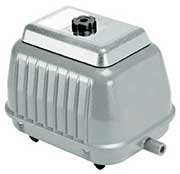3. Planning a Pond Waterfall

The pond waterfall is one feature that makes a huge difference between an average and an extraordinary water garden. Waterfalls not only add a tranquil sound to your aquatic ecosystem, they add water movement and oxygenation.
Planning of the construction of a pond waterfall takes time and thought. Water has the unique quality of finding the path of least resistance. If this path is around a rock and into your yard, then your pond will be quickly drained. Care must be taken to ensure the water stays within the confines of the liner.
These diagrams illustrate the construction of a waterfall using an additional liner:





Pond Waterfall Features
Adding a water feature increases turbulence in the pond. You will likely need additional soil to prevent soil erosion from pots that may cloud the water. A sink hole allows silt to settle in an area that needs to be cleaned from time to time. An additional sink hole lower than the water intake of the pump will provide a safe area for fish to survive if a problem arises, such as an unusually hard winter or an emergency water change. Make sure all of these questions are answered before beginning construction of a waterfall.
Be mindful that splattering or trickling water needs to be confined to a liner area that flows back into the pond. Waterfalls constructed on newly worked soil, rather than a natural slope, need to be settled and have proper support. As the ground underneath contracts and settles, low spots develop along the margins. This causes water from the fall to escape over the liner edge and seep into the surrounding ground. Include plenty of overhang at the point of overlap between both liners if more than one liner is used.



